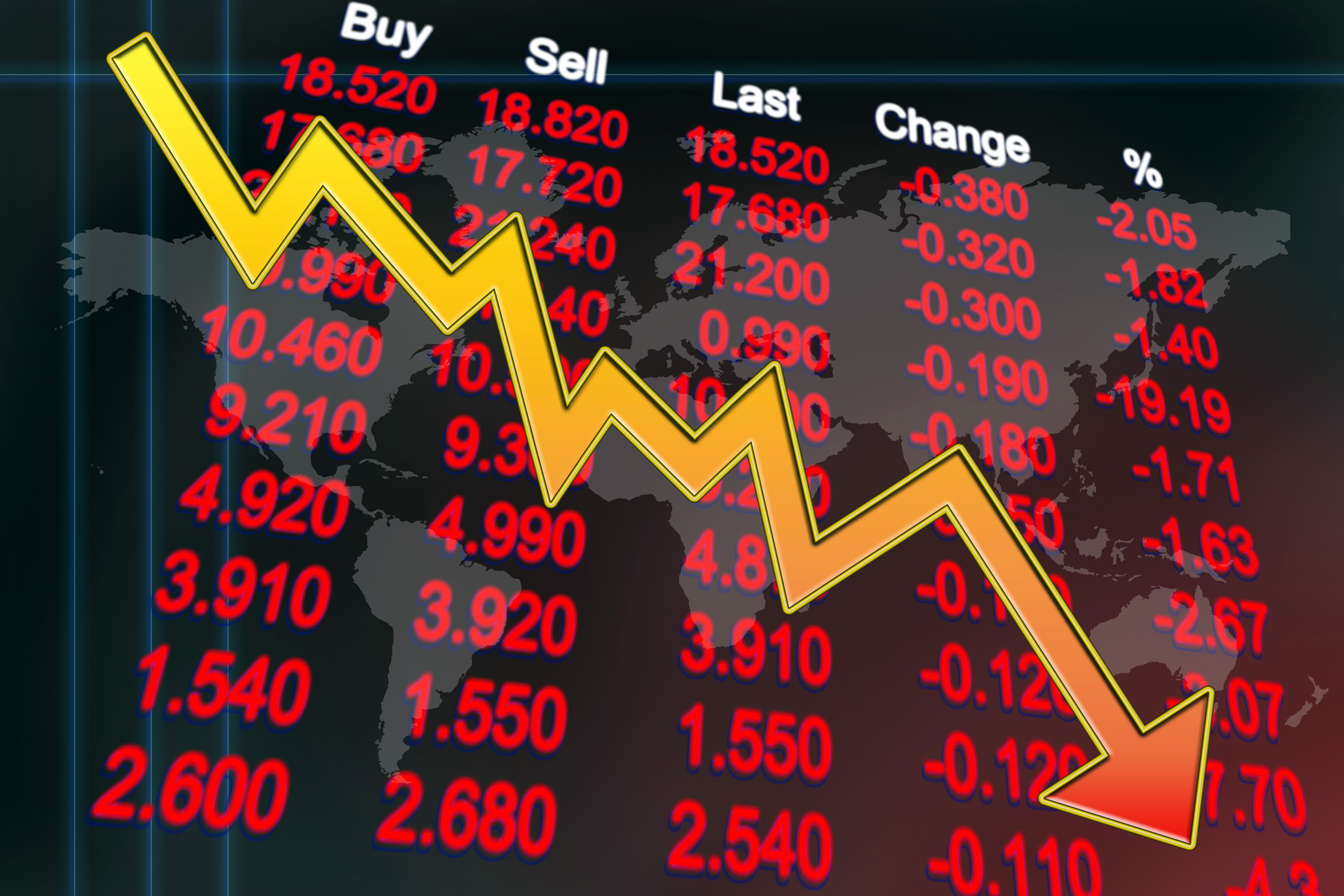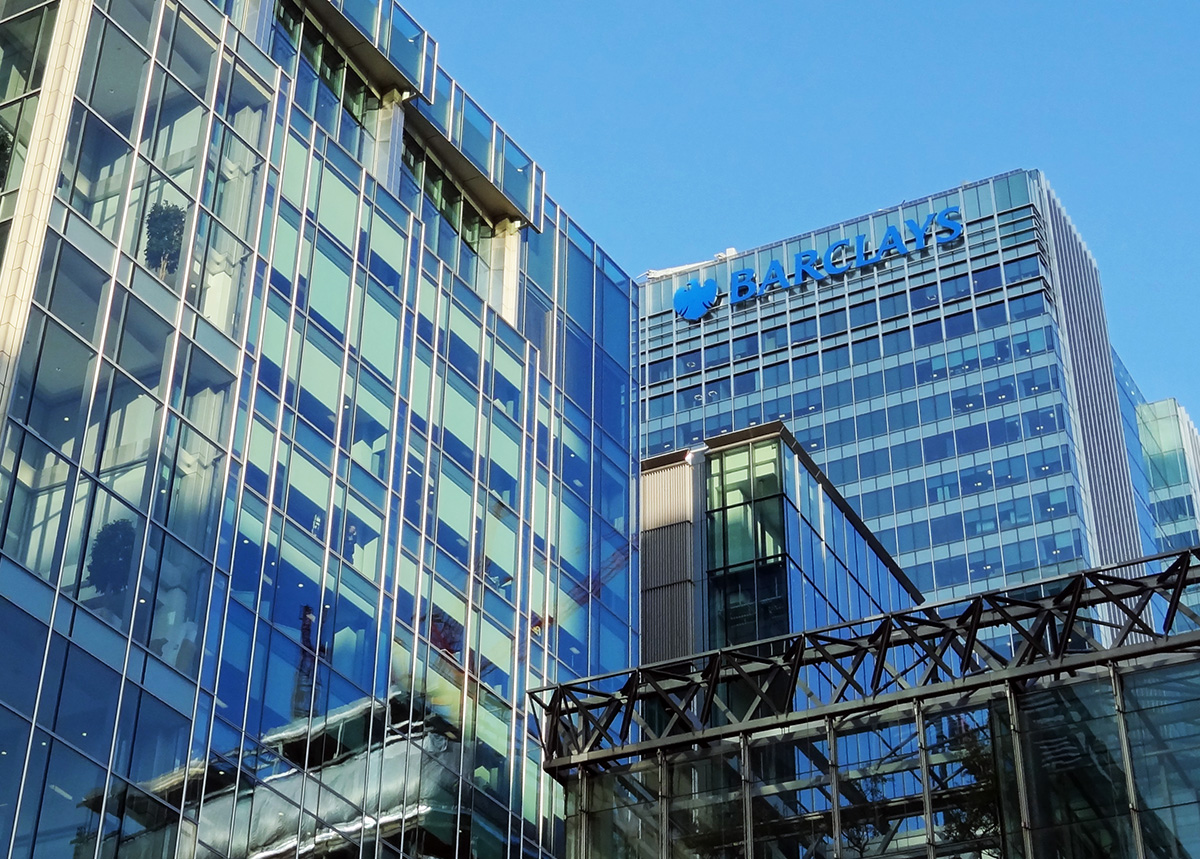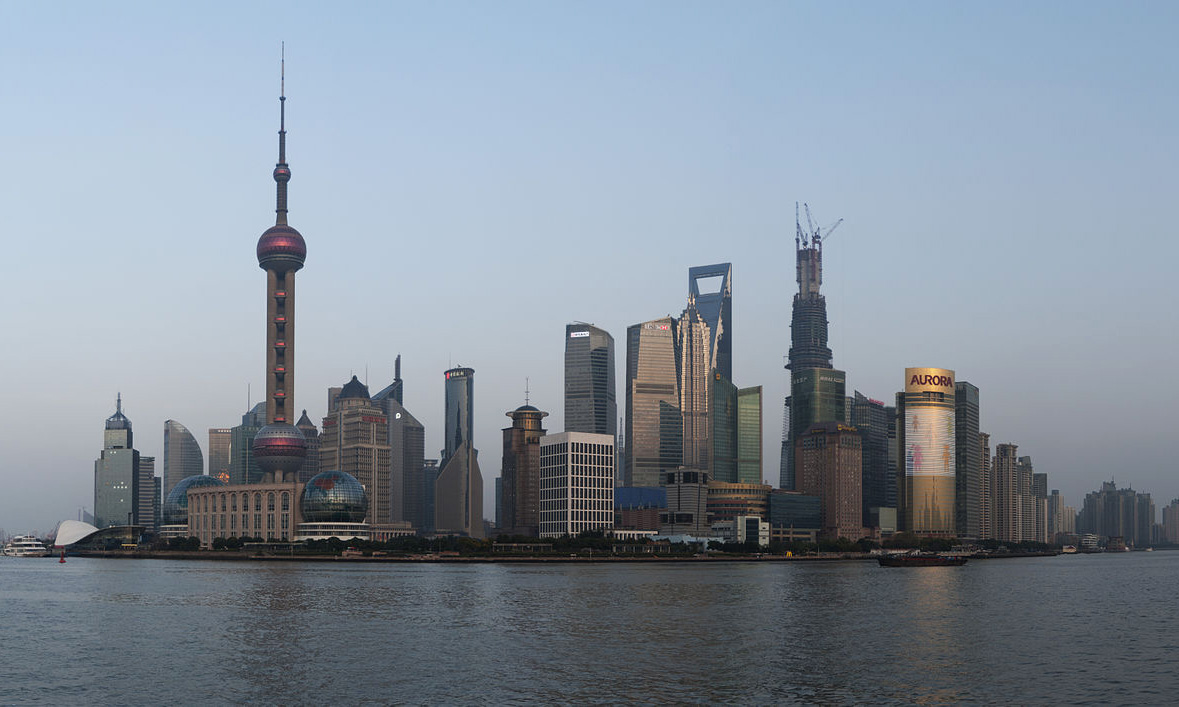 The UK government announced on 14 October 2024 in a ministerial statement that it intended to raise the threshold for the ring-fencing (separation) of retail and investment banking activities of large UK-based banks. These banks are known as ‘systemically important financial institutions (SIFIs)’, which are currently defined as those with more than £25bn of core retail deposits. Under the new regulations, the threshold would rise from £25bn to £35bn.
The UK government announced on 14 October 2024 in a ministerial statement that it intended to raise the threshold for the ring-fencing (separation) of retail and investment banking activities of large UK-based banks. These banks are known as ‘systemically important financial institutions (SIFIs)’, which are currently defined as those with more than £25bn of core retail deposits. Under the new regulations, the threshold would rise from £25bn to £35bn.
Ring-fencing is the separation of one set of banking services from another. This separation can be geographical or functional. The UK adopted the latter approach, where ring-fencing is the separation of core retail banking services, such as taking deposits, making payments and granting loans to small and medium-sized enterprises (SMEs) from investment banking and international operations. The intention of ring-fencing was to prevent contagion – to protect essential retail banking services from the risks involved in investment banking activities.
Reducing regulation to increase competition
Raising the limit is intended to facilitate greater competition in the retail banking sector. In recent years, US banks, such as JP Morgan and Goldman Sachs, have been expanding their depositor base in the UK under their respective brands – Chase UK and Marcus.
These relatively small UK subsidiaries were not ring-fenced from their wider investment banking operations as their retail deposits were under (but not far under) the £25bn limit. However, this restricted their ability to increase market share further without bearing the additional regulatory burden associated with ring-fencing that much larger incumbents face. Raising the threshold would allow them to expand to the higher limit without the regulatory burden.
The proposals are part of a broader package of reforms aimed at reducing the regulatory burden on UK-based banks. The hope is that this will stimulate greater lending to SMEs to boost investment and productivity.
The proposals also include a new ‘secondary’ threshold. This will exempt banks providing primarily retail banking services from the rules governing the provision of investment banking accounts. This exemption will apply as long as their investment banking is less than 10% of their tier 1 capital. (Tier 1 capital is currently the buffer which banks are required to retain in case of a crisis.) The changes were the outcome of a review conducted in 2022 but had not been implemented by the previous government.
The announcement has sparked a debate about ring-fencing, with some commentators calling for it to be removed altogether. Therefore, it is timely to revisit the rationale for ring-fencing. This blog examines what ring-fencing is and why it was introduced, and explains the associated economic costs and benefits.
Why was ring-fencing introduced?
 Ring-fencing was recommended by the Independent Commission on Banking (ICB) in 2011 (see link below) and implemented through the Financial Services (Banking Reform) Act of 2013. The proposed separation of core retail banking services from investment banking were intended to address issues in banks which arose during the global financial crisis and which required substantial taxpayer bailouts. (See the 2011 blog, Taking the gambling out of high street banking (update).)
Ring-fencing was recommended by the Independent Commission on Banking (ICB) in 2011 (see link below) and implemented through the Financial Services (Banking Reform) Act of 2013. The proposed separation of core retail banking services from investment banking were intended to address issues in banks which arose during the global financial crisis and which required substantial taxpayer bailouts. (See the 2011 blog, Taking the gambling out of high street banking (update).)
Following deregulation and liberalisation of financial services in the 1980s, many UK banks had extended their operations so that they combined domestic retail operations with substantial investment and international operations. The intention was to open up all dimensions of financial services to greater competition and allow banks to exploit economies of scope between retail and investment banking.
However, the risks associated with these services are very different but, in the period before the financial crisis, were provided alongside one another within banking groups.
One significant risk which was not fully recognised at the time was contagion – problems in one dimension of a bank’s activity could severely compromise its ability to provide services in other areas. This is what happened during the financial crisis. Many of the UK banks’ investment operations had made significant investments in off-balance sheet securitised debt instruments – CDOs being the most famous example. (See the 2018 blog, Lehman Brothers: have we learned the lessons 10 years on?.)
 When that market crashed in 2007, several UK-based banks incurred significant losses, as did other banks around the world. Given their thin equity buffers and the inability to borrow due to a credit crunch, such banks found it impossible to bear these losses.
When that market crashed in 2007, several UK-based banks incurred significant losses, as did other banks around the world. Given their thin equity buffers and the inability to borrow due to a credit crunch, such banks found it impossible to bear these losses.
The UK government had to step in to save these institutions from failing. If it had not, there would have been significant economic and social costs associated with their inability to provide core retail banking functions. (See the 2017 blog, Ten years on.)
The Independent Commission proposed that ‘the risks inevitably associated with banking have to sit somewhere, and it should not be with taxpayers. Nor do ordinary depositors have the incentive (given deposit insurance to guard against runs) or the practical ability to monitor or bear those risks’ (p.9). Unstructured banks, with no separation of retail from investment activities, increase the potential for both of these stakeholder groups to bear the risks of investment banking.
Structural separation of retail and investment banking addresses this problem. First, separation should make it easier and less costly to resolve problems for banks that get into trouble, avoiding the need for taxpayer bailouts. Second, structural separation should help to insulate retail banking from external financial shocks, ensuring that customer deposits and essential banking services are protected.
Problems of ring-fencing
Ring-fencing has been subject to criticism, however, which has led to calls for it to be scrapped.
 It must be noted that most of the criticism comes from banks themselves. They state that it required significant operational restructuring by UK banks subject to the regulatory framework which was complex and costly.
It must be noted that most of the criticism comes from banks themselves. They state that it required significant operational restructuring by UK banks subject to the regulatory framework which was complex and costly.
In addition, segregating activities can lead to inefficiencies, as banks may not be able to take full advantage of economies of scope between investment and retail banking. Furthermore, ring-fencing could lead to a misallocation of capital, where resources are trapped in one part of the bank and cannot be used to invest in other areas, potentially increasing the risks of the specific areas.
Assessing the new proposals
It is argued that the increased threshold proposed by the authorities may put UK institutions at a competitive disadvantage to outside entrants that are building market share from a low base. Smaller entrants do not have to engage in the costly restructuring that the larger UK incumbents have. They can exploit scope economies and capital mobility within their international businesses to cross-subsidise their retail services in the UK which incumbents with larger deposit-bases are not able to.
However, the UK market for retail banking has significant barriers to entry. Following the acquisition of Virgin Money by Nationwide, only six banking groups in the UK meet the current threshold (Barclays, HSBC, Lloyds Banking Group, NatWest Group, Santander UK and TSB). Indeed, all of those have deposits well above the proposed £35bn threshold. Consequently, raising the threshold should not add significant compliance and efficiency costs, while the potential benefits of greater competition for depositors and SMEs could be a substantial boost to investment and productivity. Furthermore, if the new US entrants do suffer problems, it will not be UK taxpayers who will be liable.
Have we been here before?
In many ways, ring-fencing is a throwback to a previous age of regulation.
 One of the most famous Acts of Congress relating to finance and financial markets in the USA is the Glass-Steagall Act of 1933. The Act was passed in the aftermath of the 1929 Wall Street crash and the onset of the Great Depression in the USA. That witnessed significant bank failures across the country and problems were traced back to significant losses made by banks in their lending to investors during the speculative frenzy that preceded the stock market crash of 1929.
One of the most famous Acts of Congress relating to finance and financial markets in the USA is the Glass-Steagall Act of 1933. The Act was passed in the aftermath of the 1929 Wall Street crash and the onset of the Great Depression in the USA. That witnessed significant bank failures across the country and problems were traced back to significant losses made by banks in their lending to investors during the speculative frenzy that preceded the stock market crash of 1929.
To prevent a repeat of the contagion and ensure financial stability, Glass-Steagall legislated to separate retail banks and investment banks.
In the UK, such separation had long existed due to the historical restrictions placed on investment banks operating in the City of London. In the late 20th century, the arguments for separation became outweighed by arguments for the liberalisation of markets to improve efficiency and competition in financial services. Banking was increasingly deregulated and separation disappeared as retail banks increasingly engaged in investment activities.
That cycle of deregulation reached its nadir in 2007 with the international financial crisis. The need to bail out banks made it clear that the supposed synergies between investment and retail banking were no compensation for the high costs of contagion in the financial system.
Regulators must be wary of calls for the removal of ring-fencing. Sir John Vickers (chairman of the independent commission on banking) highlighted the need to protect depositors, and more importantly taxpayers, from risks in banking. It is the banks that should bear the risks and manage them accordingly. Ultimately, it is up to the banks to do that better.
Articles
Bank annual reports
Access these annual reports to check the deposit base of these UK banks:
Information
Report
- Final Report: Recommendations
The Independent Commission on Banking, Sir John Vickers (Chair), Clare Spottiswoode, Martin Taylor, Bill Winters and Martin Wolf (September 2011)
Questions
- How did the structure of UK banks cause contagion risk in the period before the global financial crisis?
- How does ring-fencing aim to address this and protect depositors and taxpayers?
- Use the links to the annual reports of the covered banks to assess the extent of deposits held by the institutions in 2023. How far above the proposed buffer do the banks sit?
- Use your answer to 3) and economic concepts to analyse the impact on competition in the UK market for retail deposits of raising the threshold.
- What are the risks for financial stability of raising the threshold?
 Ten years ago, the financial crisis deepened and stock markets around the world plummeted. The trigger was the collapse of Lehman Brothers, the fourth-largest US investment bank. It filed for bankruptcy on September 15, 2008. This was not the first bank failure around that time. In 2007, Northern Rock in the UK (Aug/Sept 2007) had collapsed and so too had Bear Stearns in the USA (Mar 2008).
Ten years ago, the financial crisis deepened and stock markets around the world plummeted. The trigger was the collapse of Lehman Brothers, the fourth-largest US investment bank. It filed for bankruptcy on September 15, 2008. This was not the first bank failure around that time. In 2007, Northern Rock in the UK (Aug/Sept 2007) had collapsed and so too had Bear Stearns in the USA (Mar 2008).
Initially there was some hope that the US government would bail out Lehmans. But when Congress rejected the Bank Bailout Bill on September 29, the US stock market fell sharply, with the Dow Jones falling by 7% the same day. This was mirrored in other countries: the FTSE 100 fell by 15%.
At the core of the problem was excessive lending by banks with too little capital. What is more, much of the capital was of poor quality. Many of the banks held securitised assets containing ‘sub-prime mortgage debt’. The assets, known as collateralised debt obligations (CDOs), were bundles of other assets, including mortgages. US homeowners had been lent money based on the assumption that their houses would increase in value. When house prices fell, homeowners were left in a position of negative equity – owing more than the value of their house. With many people forced to sell their houses, prices fell further. Mortgage debt held by banks could not be redeemed: it was ‘sub-prime’ or ‘toxic debt’.
Response to the crisis
The outcome of the financial crash was a series of bailouts of banks around the world. Banks cut back on lending and the world headed for a major recession.
Initially, the response of governments and central banks was to stimulate their economies through fiscal and monetary policies. Government spending was increased; taxes were cut; interest rates were cut to near zero. By 2010, the global economy seemed to be pulling out of recession.
However, the expansionary fiscal policy, plus the bailing out of banks, had led to large public-sector deficits and growing public-sector debt. Although a return of economic growth would help to increase revenues, many governments felt that the size of the public-sector deficits was too large to rely on economic growth.
As a result, many governments embarked on a period of austerity – tight fiscal policy, involving cutting government expenditure and raising taxes. Although this might slowly bring the deficit down, it slowed down growth and caused major hardships for people who relied on benefits and who saw their benefits cut. It also led to a cut in public services.
 Expanding the economy was left to central banks, which kept monetary policy very loose. Rock-bottom interest rates were then accompanied by quantitative easing. This was the expansion of the money supply by central-bank purchases of assets, largely government bonds. A massive amount of extra liquidity was pumped into economies. But with confidence still low, much of this ended up in other asset purchases, such as stocks and shares, rather than being spent on goods and services. The effect was a limited stimulation of the economy, but a surge in stock market prices.
Expanding the economy was left to central banks, which kept monetary policy very loose. Rock-bottom interest rates were then accompanied by quantitative easing. This was the expansion of the money supply by central-bank purchases of assets, largely government bonds. A massive amount of extra liquidity was pumped into economies. But with confidence still low, much of this ended up in other asset purchases, such as stocks and shares, rather than being spent on goods and services. The effect was a limited stimulation of the economy, but a surge in stock market prices.
With wages rising slowly, or even falling in real terms, and with credit easy to obtain at record low interest rates, so consumer debt increased.
Lessons
So have the lessons of the financial crash been learned? Would we ever have a repeat of 2007–9?
On the positive side, financial regulators are more aware of the dangers of under capitalisation. Banks’ capital requirements have increased, overseen by the Bank for International Settlements. Under its Basel II and then Basel III regulations (see link below), banks are required to hold much more capital (‘capital buffers’). Some countries’ regulators (normally the central bank), depending on their specific conditions, exceed these the Basel requirements.
But substantial risks remain and many of the lessons have not been learnt from the financial crisis and its aftermath.
There has been a large expansion of household debt, fuelled by low interest rates. This constrains central banks’ ability to raise interest rates without causing financial distress to people with large debts. It also makes it more likely that there will be a Minsky moment, when a trigger, such as a trade war (e.g. between the USA and China), causes banks to curb lending and consumers to rein in debt. This can then lead to a fall in aggregate demand and a recession.
Total debt of the private and public sectors now amounts to $164 trillion, or 225% of world GDP – 12 percentage points higher than in 2009.
China poses a considerable risk, as well as being a driver of global growth. China has very high levels of consumer debt and many of its banks are undercapitalised. It has already experienced one stock market crash. From mid-June 2015, there was a three-week fall in share prices, knocking about 30% off their value. Previously the Chinese stock market had soared, with many people borrowing to buy shares. But this was a classic bubble, with share prices reflecting exuberance, not economic fundamentals.
It has already experienced one stock market crash. From mid-June 2015, there was a three-week fall in share prices, knocking about 30% off their value. Previously the Chinese stock market had soared, with many people borrowing to buy shares. But this was a classic bubble, with share prices reflecting exuberance, not economic fundamentals.
Although Chinese government purchases of shares and tighter regulation helped to stabilise the market, it is possible that there may be another crash, especially if the trade war with the USA escalates even further. The Chinese stock market has already lost 20% of its value this year.
Then there is the problem with shadow banking. This is the provision of loans by non-bank financial institutions, such as insurance companies or hedge funds. As the International Business Times article linked below states:
A mind-boggling study from the US last year, for example, found that the market share of shadow banking in residential mortgages had rocketed from 15% in 2007 to 38% in 2015. This also represents a staggering 75% of all loans to low-income borrowers and risky borrowers. China’s shadow banking is another major concern, amounting to US$15 trillion, or about 130% of GDP. Meanwhile, fears are mounting that many shadow banks around the world are relaxing their underwriting standards.
Another issue is whether emerging markets can sustain their continued growth, or whether troubles in the more vulnerable emerging-market economies could trigger contagion across the more exposed parts of the developing world and possibly across the whole global economy. The recent crises in Turkey and Argentina may be a portent of this.
 Then there is a risk of a cyber-attack by a rogue government or criminals on key financial insitutions, such as central banks or major international banks. Despite investing large amounts of money in cyber-security, financial institutions worry about their vulnerability to an attack.
Then there is a risk of a cyber-attack by a rogue government or criminals on key financial insitutions, such as central banks or major international banks. Despite investing large amounts of money in cyber-security, financial institutions worry about their vulnerability to an attack.
Any of these triggers could cause a crisis of confidence, which, in turn, could lead to a fall in stock markets, a fall in aggregate demand and a recession.
Finally there is the question of the deep and prolonged crisis in capitalism itself – a crisis that manifests itself, not in a sudden recession, but in a long-term stagnation of the living standards of the poor and ‘just about managing’. Average real weekly earnings in many countries today are still below those in 2008, before the crash. In Great Britain, real weekly earnings in July 2018 were still some 6% lower than in early 2008.
Articles
- The Lehman Brothers Crash And The Chaos That Followed – Everything You Need To Know
HuffPost, Isabel Togoh (15/9/18)
- Ten years after the crash: have the lessons of Lehman been learned?
The Guardian, Yanis Varoufakis, Ann Pettifor, Mark Littlewood, David Blanchflower, Olli Rehn, Nicky Morgan and Micah White (14/9/18)
- Financial crisis 10 years on: Who are the winners and losers?
Independent, Kate Hughes (14/9/18)
- Investment winners and losers 10 years after the crash
Financial Times, Kate Beioley (14/9/18)
- Nine Lessons From the Global Financial Crisis
Bloomberg, Mohamed A. El-Erian (13/9/18)
- Lehman — why we need a change of mindset
Deutsche Welle, Thomas Straubhaar (14/9/18)
- ‘The world is sleepwalking into a financial crisis’ – Gordon Brown
The Guardian, Larry Elliott (12/9/18)
 Economists warn of new financial crisis on anniversary of 2008 crash
Economists warn of new financial crisis on anniversary of 2008 crashChannel 4 news, Helia Ebrahimi (15/9/18)
- Financial crisis 2008: Five biggest risks of a new crash
International Business Times, Nafis Alam (14/9/18)
- Carney warns against complacency on 10th anniversary of financial crisis
BBC News, Kamal Ahmed (12/9/18)
- A cyberattack could trigger the next financial crisis, new report says
CNBC, Bob Pisani (13/9/18)
Information and data
Questions
- Explain the major causes of the financial market crash in 2008.
- Would it have been a good idea to have continued with expansionary fiscal policy beyond 2009?
- Summarise the Basel III banking regulations.
- How could quantitative easing have been differently designed so as to have injected more money into the real sector of the economy?
- What are the main threats to the global economy at the current time? Are any of these a ‘hangover’ from the 2007–8 financial crisis?
- What is meant by ‘shadow banking’ and how might this be a threat to the future stability of the global economy?
- Find data on household debt in two developed countries from 2000 to the present day. Chart the figures. Explain the pattern that emerges and discuss whether there are any dangers for the two economies from the levels of debt.
 Ten years ago (on 9 August 2007), the French bank BNP Paribas sparked international concern when it admitted that it didn’t know what many of its investments in the US sub-prime property market were worth and froze three of its hedge funds. This kicked off the financial crisis and the beginning of the credit crunch.
Ten years ago (on 9 August 2007), the French bank BNP Paribas sparked international concern when it admitted that it didn’t know what many of its investments in the US sub-prime property market were worth and froze three of its hedge funds. This kicked off the financial crisis and the beginning of the credit crunch.
In September 2007 there was a run on the Northern Rock bank in the UK, forcing the Bank of England to provide emergency funding. Northern Rock was eventually nationalised in February 2008. In July 2008, the US financial authorities had to provide emergency assistance to America’s two largest mortgage lenders, Fannie Mae and Freddie Mac.
Then in September 2008, the financial crisis really took hold. The US bank, Lehman Brothers, filed for bankruptcy, sending shock waves around the global economy. In the UK, Lloyds TSB announced that it was taking over the UK’s largest mortgage lender, Halifax Bank Of Scotland (HBOS), after a run on HBOS shares.
Later in the month, Fortis, the huge Belgian banking, finance and insurance company, was partly nationalised to prevent its bankruptcy. Also the UK government was forced to take control of mortgage-lender, Bradford & Bingley’s, mortgages and loans, with the rest of the business sold to Santander.
Early in October 2008, trading was suspended in the main Icelandic banks. Later in the month, the UK government announced a £37 billion rescue package for Royal Bank of Scotland (RBS), Lloyds TSB and HBOS. Then in November it partially nationalised RBS by taking a 58% share in the bank. Meanwhile various other rescue packages and emergency loans to the banking sector were taking place in other parts of the world. See here for a timeline of the financial crisis.

So, ten years on from the start of the crisis, have the lessons of the crisis been learnt. Could a similar crisis occur again?
The following articles look at this question and the answers are mixed.
On the positive side, banks are much more highly capitalised than they were ten years ago. Moves by the Basel Committee on Banking Supervision in its Basel III regulatory framework have ensured that banks are much more highly capitalised and operate with higher levels of liquidity. What is more, banks are generally more cautious about investing in highly complex and risky collateralised assets.
On the negative side, increased flexibility in labour markets, although helping to keep unemployment down, has allowed a huge squeeze on real wages as austerity measures have dampened the economy. What is more, household debt is rising to possibly unsustainable levels. Over the past year, unsecured debt (e.g. personal loans and credit card debt) have risen by 10% and yet (nominal) household incomes have risen by only 1.5%. While record low interest rates make such loans relatively affordable, when interest rates do eventually start to rise, this could put a huge strain on household finances. But if households start to rein in their borrowing, this would put downward pressure on aggregate demand and jeopardise economic growth.
Articles
- The crisis: 10 years in three chart
BBC News, Simon Jack (9/8/17)
 Darling: ‘Alarm bells ringing’ for UK economy
Darling: ‘Alarm bells ringing’ for UK economyBBC News (9/8/17)
- Alistair Darling warns against ‘complacency’ 10 years on from financial crisis
The Telegraph (9/8/17)
- A decade after the financial crisis consumers are still worried
Independent, Kate Hughes (9/8/17)
- Bankers still do not understand complex reasons behind financial crash, senior politician warns
Independent, Ashley Cowburn (9/8/17)
- We let the 2007 financial crisis go to waste
The Guardian, Torsten Bell (9/8/17)
- Bank of England warns of complacency over big rise in personal debt
The Guardian, Larry Elliott (24/7/17)
- On the 10th anniversary of the global financial meltdown, here’s what’s changed
USA Today, Kim Hjelmgaard (8/8/17)
- Financial crisis: Ten years ago today the tremors started
Irish Times (9/8/17)
 If We Are Racing to the Pre-Crisis Bubble, Here Are 12 Charts To Watch
If We Are Racing to the Pre-Crisis Bubble, Here Are 12 Charts To WatchBloomberg, Sid Verma (9/8/17)
Videos
Questions
- Explain what are meant by ‘collateralised debt obligations (CDOs)’.
- What part did CDOs play in the financial crisis of 2007–8?
- In what ways is the current financial situation similar to that in 2007–8?
- In what ways is it different?
- Explain the Basel III banking regulations.
- To what extent has the Bank of England exceeded the minimum Basel III requirements?
- Explain what is meant by ‘stress testing’ the banks? Does this ensure that there can never be a repeat of the financial crisis?
- Why is it desirable for central banks eventually to raise interest rates to a level of around 2–3%? Why might it be difficult for central banks to do that?
 The UK government announced on 14 October 2024 in a ministerial statement that it intended to raise the threshold for the ring-fencing (separation) of retail and investment banking activities of large UK-based banks. These banks are known as ‘systemically important financial institutions (SIFIs)’, which are currently defined as those with more than £25bn of core retail deposits. Under the new regulations, the threshold would rise from £25bn to £35bn.
The UK government announced on 14 October 2024 in a ministerial statement that it intended to raise the threshold for the ring-fencing (separation) of retail and investment banking activities of large UK-based banks. These banks are known as ‘systemically important financial institutions (SIFIs)’, which are currently defined as those with more than £25bn of core retail deposits. Under the new regulations, the threshold would rise from £25bn to £35bn. Ring-fencing was recommended by the Independent Commission on Banking (ICB) in 2011 (see link below) and implemented through the Financial Services (Banking Reform) Act of 2013. The proposed separation of core retail banking services from investment banking were intended to address issues in banks which arose during the global financial crisis and which required substantial taxpayer bailouts. (See the 2011 blog, Taking the gambling out of high street banking (update).)
Ring-fencing was recommended by the Independent Commission on Banking (ICB) in 2011 (see link below) and implemented through the Financial Services (Banking Reform) Act of 2013. The proposed separation of core retail banking services from investment banking were intended to address issues in banks which arose during the global financial crisis and which required substantial taxpayer bailouts. (See the 2011 blog, Taking the gambling out of high street banking (update).) When that market crashed in 2007, several UK-based banks incurred significant losses, as did other banks around the world. Given their thin equity buffers and the inability to borrow due to a credit crunch, such banks found it impossible to bear these losses.
When that market crashed in 2007, several UK-based banks incurred significant losses, as did other banks around the world. Given their thin equity buffers and the inability to borrow due to a credit crunch, such banks found it impossible to bear these losses. It must be noted that most of the criticism comes from banks themselves. They state that it required significant operational restructuring by UK banks subject to the regulatory framework which was complex and costly.
It must be noted that most of the criticism comes from banks themselves. They state that it required significant operational restructuring by UK banks subject to the regulatory framework which was complex and costly. One of the most famous Acts of Congress relating to finance and financial markets in the USA is the Glass-Steagall Act of 1933. The Act was passed in the aftermath of the 1929 Wall Street crash and the onset of the Great Depression in the USA. That witnessed significant bank failures across the country and problems were traced back to significant losses made by banks in their lending to investors during the speculative frenzy that preceded the stock market crash of 1929.
One of the most famous Acts of Congress relating to finance and financial markets in the USA is the Glass-Steagall Act of 1933. The Act was passed in the aftermath of the 1929 Wall Street crash and the onset of the Great Depression in the USA. That witnessed significant bank failures across the country and problems were traced back to significant losses made by banks in their lending to investors during the speculative frenzy that preceded the stock market crash of 1929. Ten years ago, the financial crisis deepened and stock markets around the world plummeted. The trigger was the
Ten years ago, the financial crisis deepened and stock markets around the world plummeted. The trigger was the  Expanding the economy was left to central banks, which kept monetary policy very loose. Rock-bottom interest rates were then accompanied by quantitative easing. This was the expansion of the money supply by central-bank purchases of assets, largely government bonds. A massive amount of extra liquidity was pumped into economies. But with confidence still low, much of this ended up in other asset purchases, such as stocks and shares, rather than being spent on goods and services. The effect was a limited stimulation of the economy, but a surge in stock market prices.
Expanding the economy was left to central banks, which kept monetary policy very loose. Rock-bottom interest rates were then accompanied by quantitative easing. This was the expansion of the money supply by central-bank purchases of assets, largely government bonds. A massive amount of extra liquidity was pumped into economies. But with confidence still low, much of this ended up in other asset purchases, such as stocks and shares, rather than being spent on goods and services. The effect was a limited stimulation of the economy, but a surge in stock market prices. It has already experienced
It has already experienced  Then there is a risk of a cyber-attack by a rogue government or criminals on key financial insitutions, such as central banks or major international banks. Despite investing large amounts of money in cyber-security, financial institutions worry about their vulnerability to an attack.
Then there is a risk of a cyber-attack by a rogue government or criminals on key financial insitutions, such as central banks or major international banks. Despite investing large amounts of money in cyber-security, financial institutions worry about their vulnerability to an attack.

